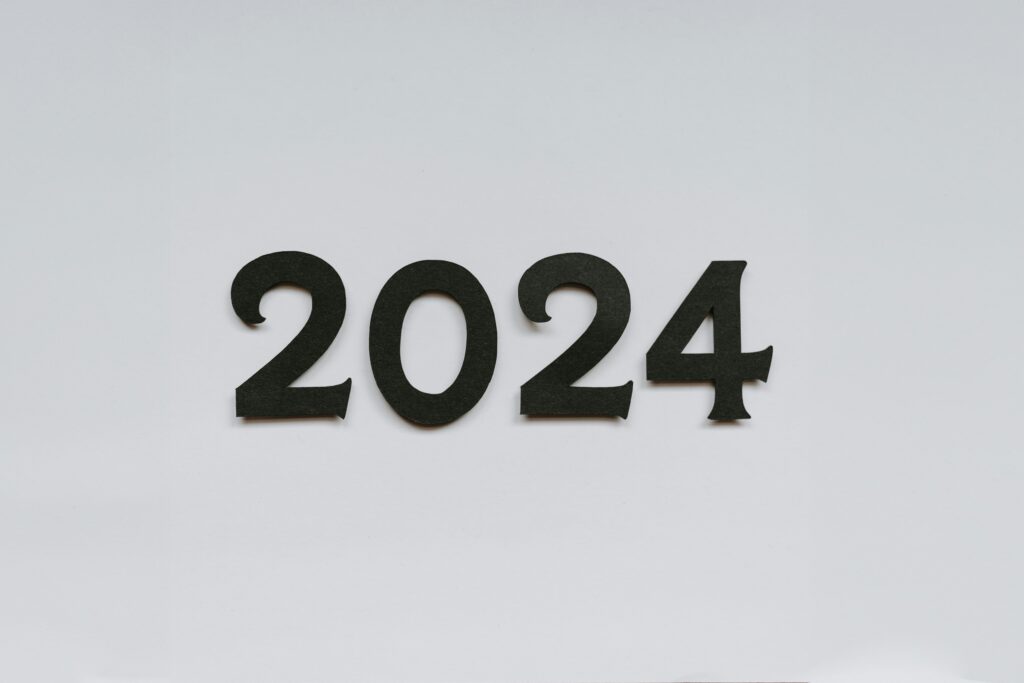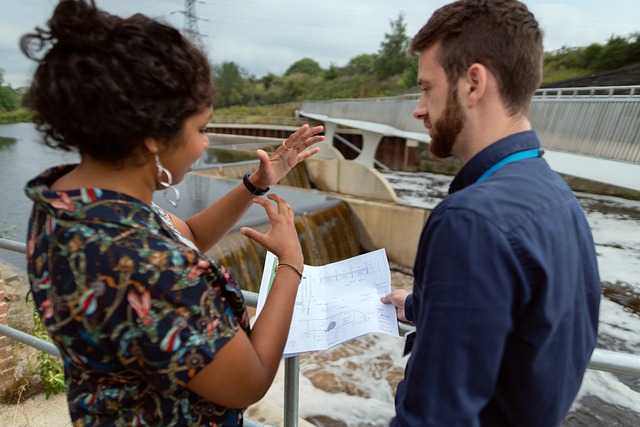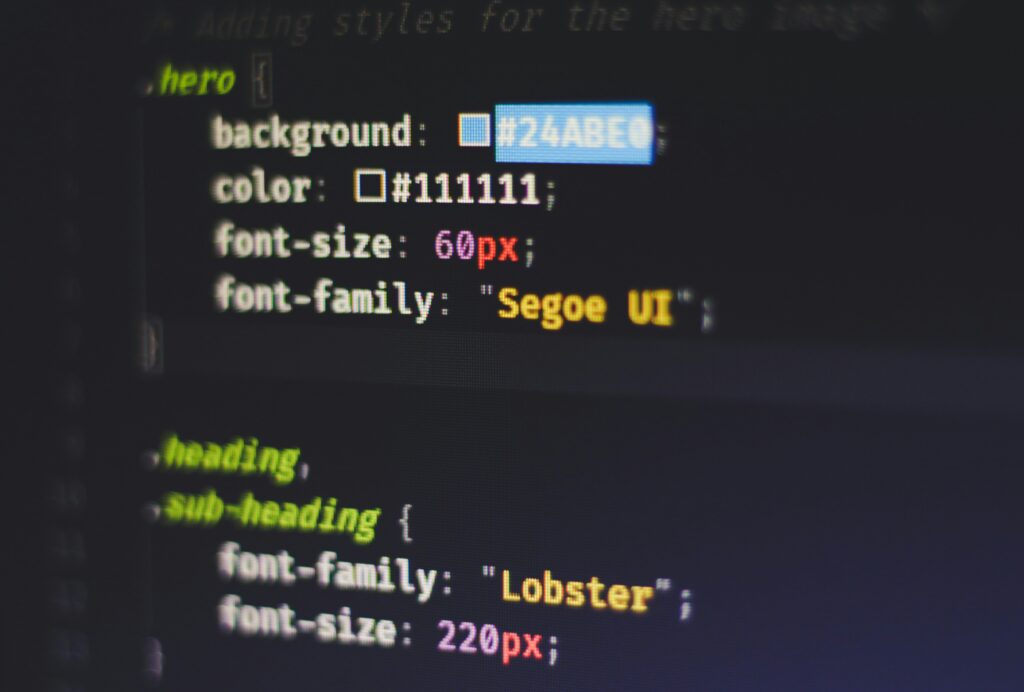Design for a Faster, Smarter World
Evolving with the Pace of Technology
Design in 2024 is no longer about just looking good—it’s about keeping up. As AI tools accelerate workflows and consumer touchpoints multiply, visual communication must be both efficient and adaptive. The best designs today are built for speed, clarity, and impact.
- AI-assisted tools are redefining how quickly assets are produced
- Designers are spending less time on manual tasks and more on creative direction
- Interfaces, branding, and content need to function across multiple devices and platforms instantly
Clarity Over Complexity
Gone are the days of intricate designs that favor aesthetics over usability. Today’s visual language is bolder, more intentional, and impossible to misunderstand. As attention spans shrink and digital noise rises, design must cut through with confidence.
- Typography is getting larger, sharper, and more direct
- Color palettes are more high-contrast and emotionally resonant
- Layouts stay clean, flexible, and mobile-first
Key Principle: Clarity is not simplicity; it’s precision with purpose.
What the Best Designers Are Focusing On
Top-tier designers in 2024 are prioritizing decisions that align with both user experience and business value. Their focus is on creating systems and visuals that serve real-world goals—not just aesthetics.
Their priorities include:
- Building scalable, responsive design systems
- Designing with accessibility and inclusivity in mind
- Leveraging AI to test, iterate, and personalize visuals faster
- Partnering cross-functionally with marketers, developers, and strategists
Why It Matters: Strong design today guides users, tells stories, builds trust, and converts. It’s no longer just a creative asset—it’s a central tool in scaling brands fast.
Design in 2024 isn’t chasing trends—it’s meeting the moment with speed, clarity, and unmistakable intention.
Bold Design Is Making a Statement
In 2024, design trends are breaking away from minimalism and embracing louder, more expressive approaches. Visual storytelling is no longer just about clean layouts—it’s about making a strong impression through intentional chaos, bold typography, and unexpected combinations.
Typography Takes Center Stage
In today’s design landscape, type doesn’t just support the visuals—it is the visual.
- Large, oversized fonts that dominate entire layouts
- Custom typefaces used to create brand identity
- Words as art: using text as the primary graphic element
Designers are using bold type to lead the eye, set tone, and instantly communicate emotion.
Maximalism Is Back (and Louder Than Ever)
After years of serene, stripped-back minimalism, maximalist design is surging back.
- Clashing patterns that embrace contrast rather than avoid it
- Bright, saturated color palettes that demand attention
- Unexpected textures and layering techniques that create a sense of depth and tactile intrigue
This isn’t about being chaotic for chaos’ sake—it’s about creating visually rich experiences that express mood, culture, and personality.
Clarity Through Chaos
You might assume complexity reduces clarity, but the newest breed of designers is flipping that idea.
- Intentional design brings structure to vibrant, layered visuals
- Hierarchy through contrast: bold type, contrasting colors, and distinct shapes direct the viewer’s focus
- Personality-driven aesthetic allows brands and creators to stand out in a crowded digital space
When done right, this controlled chaos captures attention and communicates more effectively than pristine minimalism.
These bold trends signal a shift toward expressive design. They’re not just about being seen—they’re about being remembered.
Designers aren’t wasting time debating whether AI belongs in their toolbox—they’re already using it. For layout drafts, image generation, and font pairings, AI tools are cutting out the slog and giving creatives a running start. The grunt work that used to suck up hours? Mostly automated.
Now designers can spend energy where it counts: refining ideas, exploring bold directions, and pushing aesthetics. Tools like Midjourney, DALL·E, and Fontjoy are streamlining the routine so vision stays front and center.
That said, here’s a hard truth: AI isn’t here to replace talent. It’s fast, not wise. It can flood you with visual options, but it still takes a human eye to know what hits. Rely on it too much, and your work starts losing its edge. Used right, though, it’s a solid creative partner.
For a deeper perspective, check out The Power of AI Tools in Modern Graphic Design.
Motion Design Isn’t Optional Anymore
Static visuals just don’t cut it in 2024. If your content doesn’t move, it might as well be invisible. Audiences now expect micro-animations, subtle hover effects, and scroll-triggered interactions as standard—not as show-off extras. These elements aren’t just flash; they guide attention, communicate emotion, and make content stick.
Motion design has moved from splashy intros to every layer of a creator’s output. Kinetic typography, animated logos, even dynamic lower-thirds—this stuff is now expected in everything from intros to Instagram reels. You don’t need to be Pixar, but ignoring motion altogether makes your content feel unfinished.
Vloggers who embrace motion as part of their storytelling toolkit are standing out—and staying sticky. Whether it’s a smooth text pop, a blinking subscribe CTA, or a slick B-roll transition, movement helps keep people watching. In a landscape where scrolls are fast and attention is short, every second counts.
Eco-Conscious Design Isn’t Just a Value—It’s a Visual Statement
Design is under a microscope now, and not just for how it looks. Sustainability is no longer a footnote—it’s the headline. Clients don’t just want pretty. They want proof. Recycled materials, renewable inks, minimal waste. The style has shifted too. Designers are leaning into organic textures, earthy tones, and compositions that feel natural, lived-in, and low-impact. Ink coverage is being scaled back, not just for effect but efficiency.
This isn’t about jumping on a bandwagon. It’s about aligning visuals with values. The carbon footprint of a project sits in the same meeting as the mood board. Creatives are being asked, “How green is this piece?” and if there’s no clear answer, the project may not move forward. Vlog-related branding and merch are following suit: less gloss, more grit—with intention.
Nostalgia Rewired: Visual Throwbacks with a Sharp Edge
We’re seeing a wave of visual aesthetics that pull directly from the past—but not in a fuzzy, feel-good way. Vloggers are mining the 90s and early 2000s for pixel art, clunky web layouts, VCR static, and analog textures. But this isn’t lazy retro. It’s deliberate. It’s styled. There’s structure beneath the chaos.
Grunge and glitch—once signs of digital decay—are being curated into cohesive, high-impact visual brands. The edges are rough, but the message is intentional. Think zine-inspired overlays layered with surgical edits. UI straight out of GeoCities, but rebuilt in 4K. It’s nostalgia, retooled for precision.
This trend works because it taps memory while pushing it forward. The style says: I remember where the internet came from, but I’m not stuck there. For creators, it’s a chance to stand out with visuals that are oddly familiar, yet sharply new. The past is proving to be powerful creative fuel—when handled with purpose.
Trends Are Tools—Not Rules
Trends come and go. What sticks is design that actually communicates. While it’s smart to stay in tune with what’s hot in 2024, smart creators treat trends like tools in the box—not commandments. The goal isn’t to look trendy. It’s to create something that resonates.
Good design now is about more than just polish. It’s about intention. Layouts that guide the eye. Color, motion, and type that clarify instead of clutter. And always, story first. The best visuals move people—not just metrics.
In a sea of constant shifts, successful vloggers are leaning into design that’s clean, usable, and forward-thinking. Whether on thumbnails, overlays, or entire series branding, the winners aren’t just styling—they’re strategizing.


 Lead Software Strategist
Lead Software Strategist
